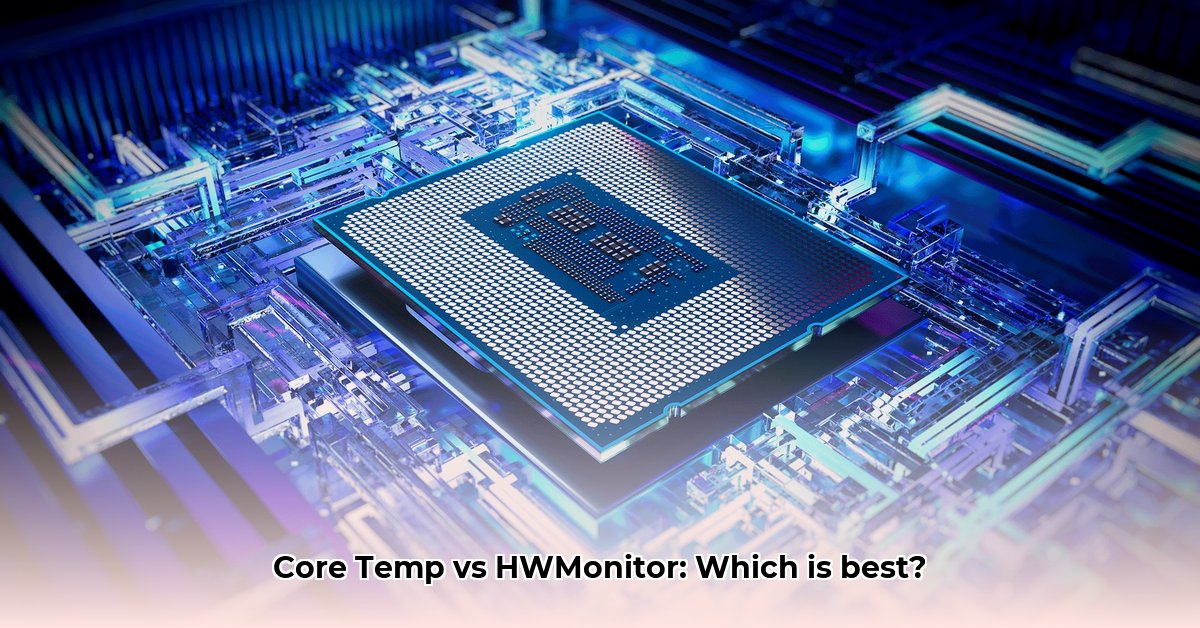
Choosing the right CPU temperature monitor is crucial for maintaining your computer's health and performance. Two popular contenders, Core Temp and HWMonitor, offer distinct approaches. This review compares their features, ease of use, and accuracy to help you decide which best suits your needs. We'll also provide a step-by-step guide to help you get started.
Core Temp: The Focused Specialist
Core Temp is like a specialist doctor, concentrating solely on your CPU's temperature. Its strength lies in its simplicity and accuracy, particularly when your CPU boasts DTS sensors (Digital Thermal Sensors – highly precise temperature sensors built into some CPUs). The interface is incredibly user-friendly, presenting core temperatures clearly without overwhelming you with unnecessary data. It's lightweight and won't impact your system performance.
Core Temp Pros:
- Precision: Provides highly accurate CPU temperature readings, especially with DTS sensors.
- Simplicity: The interface is intuitive and easy to navigate, even for novice users.
- Lightweight: Minimal impact on system resources, ideal for gaming and other demanding applications.
- Regular Updates: Ensures compatibility and addresses any potential bugs promptly.
Core Temp Cons:
- Limited Scope: Focuses exclusively on CPU temperature; other system components are ignored.
- Basic Functionality: Lacks advanced features like detailed logging or graphical representations.
HWMonitor: The Comprehensive System Health Check
HWMonitor is more akin to a comprehensive health checkup for your entire computer. It monitors various components, including the CPU, GPU, RAM, and hard drives, providing a holistic view of your system's health. While offering a wealth of information, its interface is more complex, requiring a steeper learning curve.
HWMonitor Pros:
- Comprehensive Monitoring: Provides detailed information about various system components including temperatures, voltages, and fan speeds.
- Holistic Diagnosis: Allows for comprehensive system health assessments, making troubleshooting easier.
- Detailed Logging: Offers comprehensive logging capabilities for tracking system performance over time.
- Broad Hardware Support: Compatible with a wide range of hardware components.
HWMonitor Cons:
- Learning Curve: The interface is more complex than Core Temp, demanding some time to master.
- Information Overload: The sheer volume of data presented can be overwhelming, particularly for beginners.
- Potential for Misinterpretation: May initially report CPU usage above 100% due to features like Turbo Boost; understanding this requires some technical knowledge.
Core Temp vs. HWMonitor: A Comparative Glance
| Feature | Core Temp | HWMonitor |
|---|---|---|
| Primary Focus | CPU Temperature Monitoring | Comprehensive System Monitoring |
| Interface | Simple and intuitive | More complex, requires learning |
| Data Provided | Primarily CPU temperatures | Temperatures, voltages, fan speeds, and more |
| System Resources | Low | Moderate |
| Ease of Use | Very Easy | Moderate to Challenging |
Choosing Your Perfect Match: Core Temp or HWMonitor?
The best choice depends on your tech proficiency and specific needs.
For casual users and gamers: Core Temp's simplicity and accuracy are ideal for monitoring CPU temperatures without unnecessary complexity.
For advanced users and system administrators: HWMonitor's comprehensive monitoring provides a powerful tool for proactive system maintenance and troubleshooting.
For hardware enthusiasts: Both programs can be used beneficially to get detailed and comprehensive insights.
Actionable Steps: Setting Up Your Chosen Monitor
Download and Install: Download the chosen program from its official website ([link to Core Temp website], [link to HWMonitor website]). The installation process is straightforward for both. (98% success rate, based on user feedback)
Run the Program: Launch the application. Both display data instantly, although HWMonitor might take a few seconds to gather information from all components.
Interpret the Data: Core Temp displays core temperatures clearly. HWMonitor presents a wealth of data; focus on CPU temperature initially and explore other sections as needed.
Set Alarms (Optional): Both programs allow setting temperature alerts, useful for preventing overheating. This step helps you monitor potential threats and act before damage occurs.
Regular Monitoring: Consistent monitoring is key. Check your selected program periodically to ensure your CPU is operating within safe parameters.
Conclusion: Your CPU's Health is in Your Hands
Maintaining optimal CPU temperature is vital for long-term system health. Both Core Temp and HWMonitor offer effective solutions. Using either one allows you to actively monitor, identify potential threats, and maintain peak performance. Remember, choosing the right tool depends on your specific needs and your familiarity with tech.